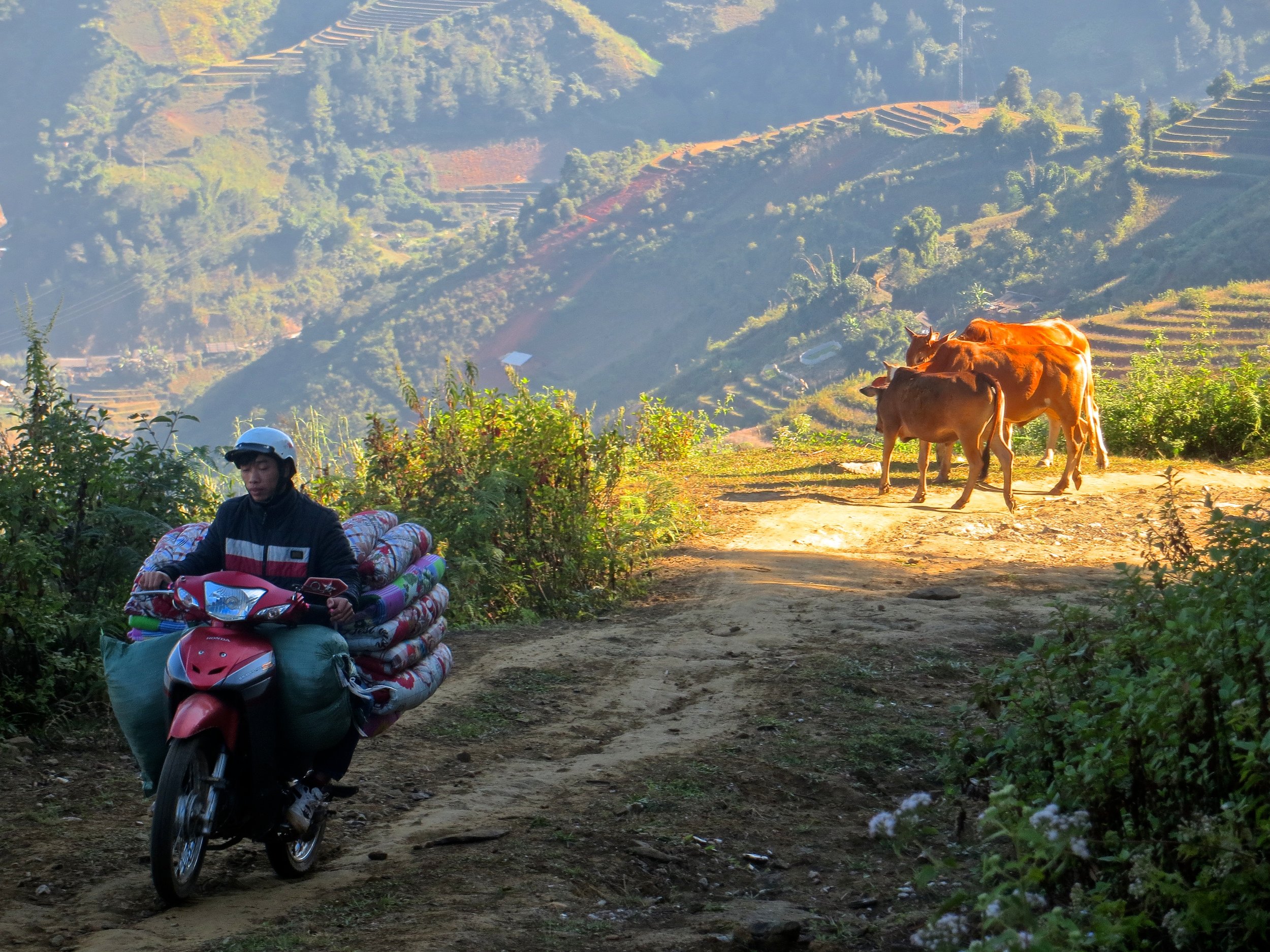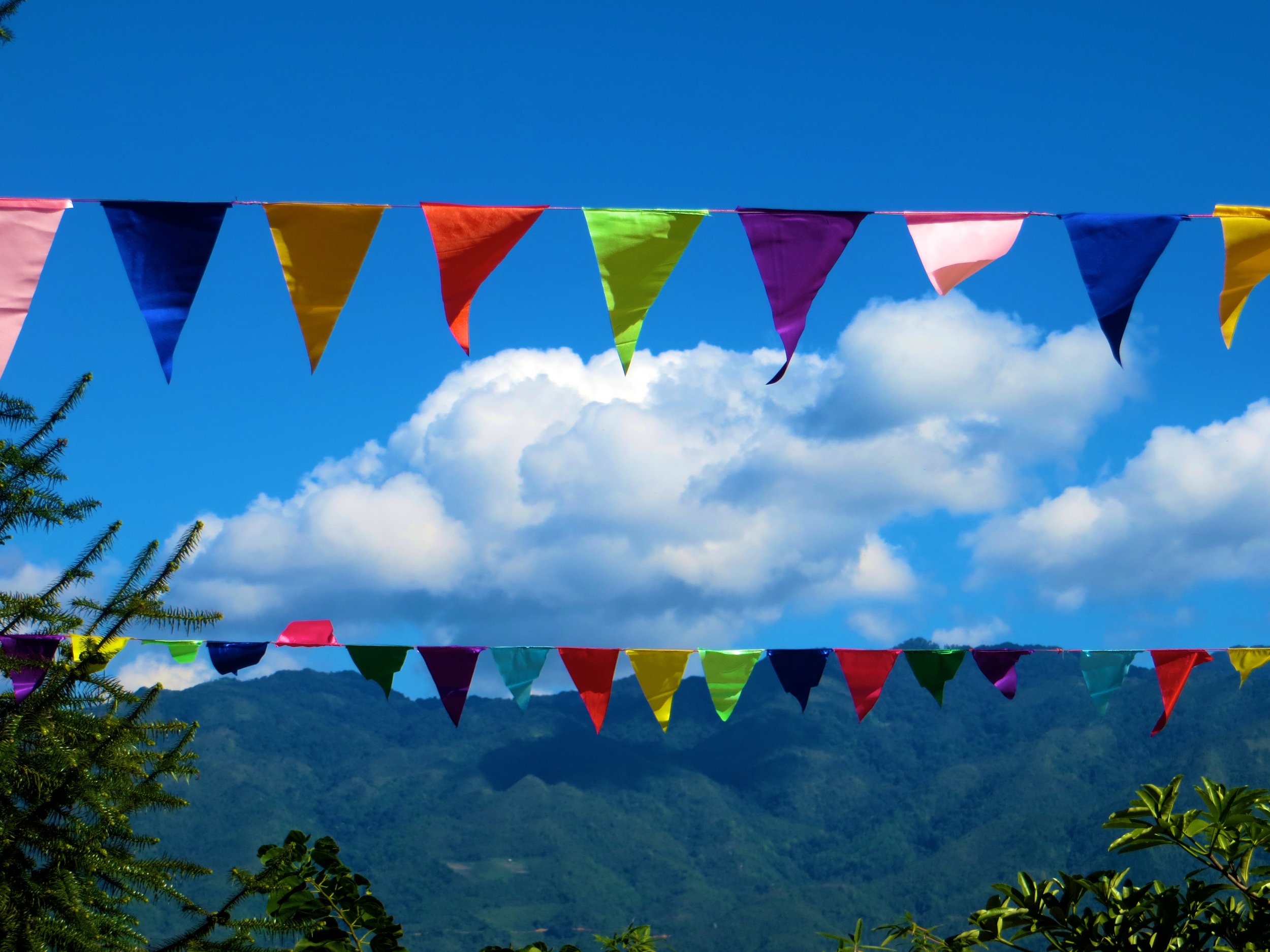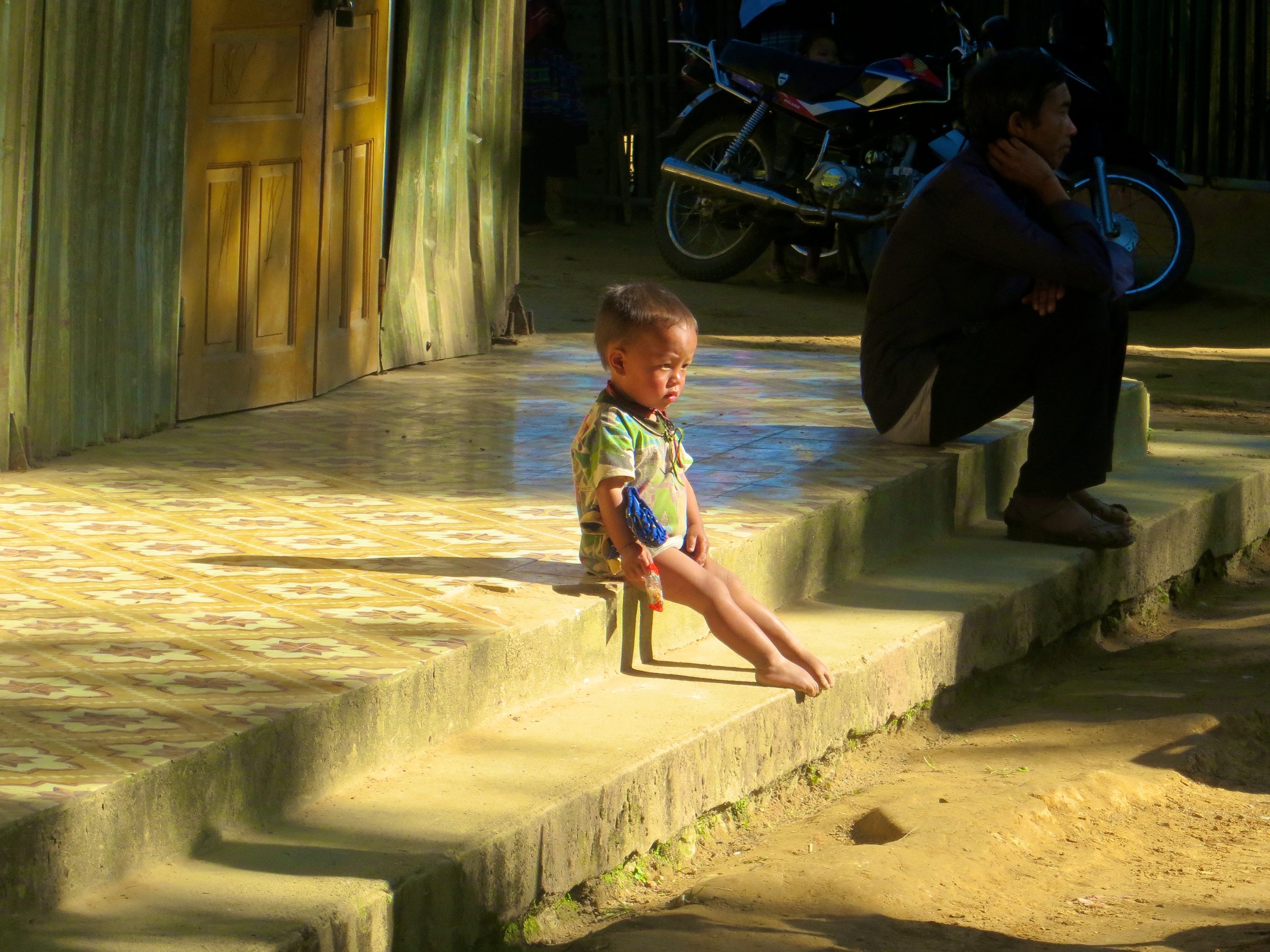The H'mong: A People Without A Country
A guest in the home of a people without a home
I must say that one of the biggest and most unexpected perks of teaching in Vietnam is that I actually get to become friends with my students. I don't know how I ever would have learned so much about Vietnamese culture and Vietnamese people if I didn't have this job. In America it is sort of taboo for teachers and students to be friends but here that is not the case. One evening over a nice meal of exotic shellfish one of my adult students invited me to come on a charity trip with him.
Well... why not? I'm in.
The blanket cost of the trip was 700,000 VND ($32.75). We were going to do charity work in a remote Vietnamese province called Yên Bái. Our first destination was a small township called Mù Cang Chải. It is located near the Chinese and Laotian borders and is a solid 11 hour bus ride away from Hanoi. We would be visiting the H'mong people.
Who Are The H'mong?
The H'mong are the ethnic minority group in Vietnam. To be clear, these people are not Vietnamese, rather they are an ethnicity/culture without a country. Vietnamese is their 2nd language.
The history of the H’mong is blurry but it is widely accepted (among people who actually care about this obscure culture) that their heritage can be traced back to a town in northern China called Zhuolu. Since then however, they have migrated south to inhabit the mountainous highlands that span the northern Chinese borders of Vietnam, Laos and Thailand. It is here that they have lived for the past few centuries. Involved in almost all of the many conflicts that the region has seen over the years, subjected to military actions bordering on genocidal at the hand of multiple governments, the H’mong are now an obscure, dying culture. The H’mong language is spoken only by a relative few now. They were actually responsible for a plot to overthrow the Laotian government in 2007... allegedly. Interesting stuff.
In Vietnam people often laugh when you mention the H'mong. This is because the word "H'mong" sounds a lot like the words "show ass" in Vietnamese. They swear it's nothing related to racism though; they insist that it's funny and harmless. Idk man. You can be the judge.
Getting To Mù Cang Chải
I boarded the bus feeling pretty good that I was the only white person on the trip. It was a good indicator as to the authenticity of the experience I was about to have. Hardly any of my fellow travelers spoke English either. 9 hours later however, I was feeling pretty terrible about everything... about life. Buses in Southeast Asia are not made for somebody my size. And the infrastructure outside of the major cities is terrible. We were driving overnight and I was doing my best to sleep but it was tough with our bus driver trying to break some sort of land speed record on the winding, bumpy mountain roads. It didn’t help that I had to twist and mangle my long white-person legs into terrible positions to fit into my seat in the first place. Still though, I managed to achieve sleep at a couple points during the voyage but I would be rudely awakened when our bus sped over a bump so big that I actually lifted off the seat. It was a little traumatizing.
We stopped in small mountain towns during the night to get some food, stretch out, and pee in the bushes. At one point I was pretty sure our driver was peeing in a graveyard but apparently it was just a headstone vendor's yard. Anyway, I spent about 20,000 VND ($0.93) on food along the way.
We made it to Mù Cang Chải a little bit before sunrise. This town would serve as our ‘base camp.’ We watched the marketplace transform from an empty shell to a bustling place of commerce as the sun rose. The province is apparently known for having amazing pork so I tried it. It cost another 10,000 VND ($0.47). It was very good.
Once we had all been fed we re-boarded the bus. I was careful to get there first and snag the seat closest to the door. I needed the legroom. The bus climbed higher into the mountains and eventually dropped us off on the side of the road near a bridge made of wooden planks and rope that went over a river. It swayed in the wind as we crossed it.
This video picks up right about there...
Trekking To The Mountain-Top H'mong Village
The trek up the mountain was pretty substantial. Especially carrying a muddy burlap sack full of what I can only assume were bricks. I started strong but it wasn’t long before the hike went from pleasant to grueling. I was separated from the herd as I struggled and panted my way through the muddy mountain trails. I was on a mission though. Motorbikes zipped up and down the mountain all the while but I gritted my teeth and kept moving. It wouldn’t have been bad but for the muddy sack of… something, that I was carrying. Eventually though one of the H’mong men on a motorbike saw my poor state and offered me a ride up the mountain. Don’t mind if I do.
First Contact: Entering The H'mong Village
When I got to the top of the mountain, the villagers looked at me as if I were an alien. It was clear that not many white people had been there before me. But once they got over my foreign-ness they were some of the most hospitable and kind people you could ever have the pleasure to meet.
Children peaked out from their classrooms at me. The H'mong primary school was the centerpiece of this town. The classrooms looked identical to the classrooms I am used to back in Hanoi, the capital city. This out-of-place throwback sat in silence atop a remote ridge in a far flung province. There was no electricity so the rooms were dark and the tile floors were covered in dirt.
The children nervously stared at me from around the corner. Some of them wore the traditional H'mong robes, while others of them wore second-hand clothes which had no doubt been delivered to them by a charity outlet similar to the one that I was working with. I showed them some "magic" tricks that I can do with my fingers and then they began to warm up to me.
Getting To Know The H'mong
That afternoon I took a walk, just to explore. As I wandered, I was joined by 3 other people that had come on the trip with me. They spoke almost no English but they still invited me to join their 'posse', which I thought was nice. We walked down a randomly selected dirt road a little ways until we were invited into a middle-aged woman’s home. She gave us some small Vietnamese snacks and invited us to sit.
One of the Vietnamese girls in my new posse seemed to be having quite a stimulating conversation with the H'mong woman. With no hope of understanding what they were saying, I sat and ate my snacks, just taking it all in. As I ate though, the H'mong woman started to sound more and more distraught. The person sitting next to me spoke some rough English so I asked if they could clue me in on what was happening in this conversation.
"Her husband is very bad," my translation began. The woman was saying that she was very poor and that she did not belong there. She was not H'mong; she was Vietnamese. She was born in a different part of Vietnam. She was only living there because of a marriage (which I think must not have been her choice). Now, with 2 children, she was powerless to escape her circumstances. Her voice began to crack. She continued to talk about her husband but soon she broke down and wept. At that point the remaining 2 people ushered me out the door, following close behind me. I think it would have been rude for us to continue eavesdropping on their heart-to-heart.
That night we ate a giant dinner together with the village. The teachers in the village’s school invited me to take shots with them… a lot of shots. After each shot we would shake hands, as is tradition. The H'mong teachers were very enthused to meet me after finding out that I too was a teacher. In my (translated) conversation with them they told me that they had left Yên Bái for university but had since returned in order to help their village.
After dinner there was a giant bonfire. People of all ages, children to adults, laughed, sang, and danced around it for hours. But the most interesting part of the night came after most of the village was asleep.
Some of the men (who had been drinking with us) brought out a traditional H’mong instrument to perform a special, cultural dance around what remained of the fire. It was very odd indeed. I wasn't really sure what I was seeing. Later research revealed that this instrument is called a "Qeej". Don't ask me how to pronounce that. Below is a picture of a traditional qeej. You blow into the top end of the dark, wooden shaft (I couldn't think of non-sexual way to explain it) and point the curved ends out in front of you so that the sound can be heard clearly.
The dance performed by the men is something that was just so strange that I find myself unable to clearly describe it to you. Since returning to Hanoi I have done my best to find videos of this type of dance on the internet but I have been unable to find anything that quite compares to what they did. 2 men jumped around the fire. The first man was playing the qeej and the second man trailed him, playing something slightly smaller and more obscure. The men would take a long leap and land on one foot. They would pause there, balancing on one foot, swaying for a moment, before swinging their next foot forward for their next leap. The moved around the fire quickly and violently. It was just about the strangest thing I have ever encountered. It was awesome!
Trekking to H'mong Village #2
The next day we hiked down the other side of the mountain to deliver supplies to another village. It was a gorgeous hike. The far North of Vietnam has a rugged beauty. It was cold up in the highlands in the winter but as the hot sun peaked out from over the ridges on the horizon it warmed my bones in such a way that I almost didn't mind all the giant spiders. Here are some photographs from our descent to the next village.
As before, the centerpiece of this town was also the primary school. The children lined up while the token fat guy on the trip shimmied into a Santa costume behind the school. Then Vietnamese Santa made his entrance and proceeded to distribute a care package to each child waiting eagerly in line. The mothers, dressed in traditional H'mong garb, furrowed their brows skeptically as they watched the scene unfold before them.
By the time mid-day came, it was time to start our trek back. We waded through a river and climbed a small cliff to get back to the main road. It was there that the buses unceremoniously picked us up. The ride home was much more pleasant with my roomy seat by the door.
The total cost of this trip amounted to 730,000 VND ($34.15).





























